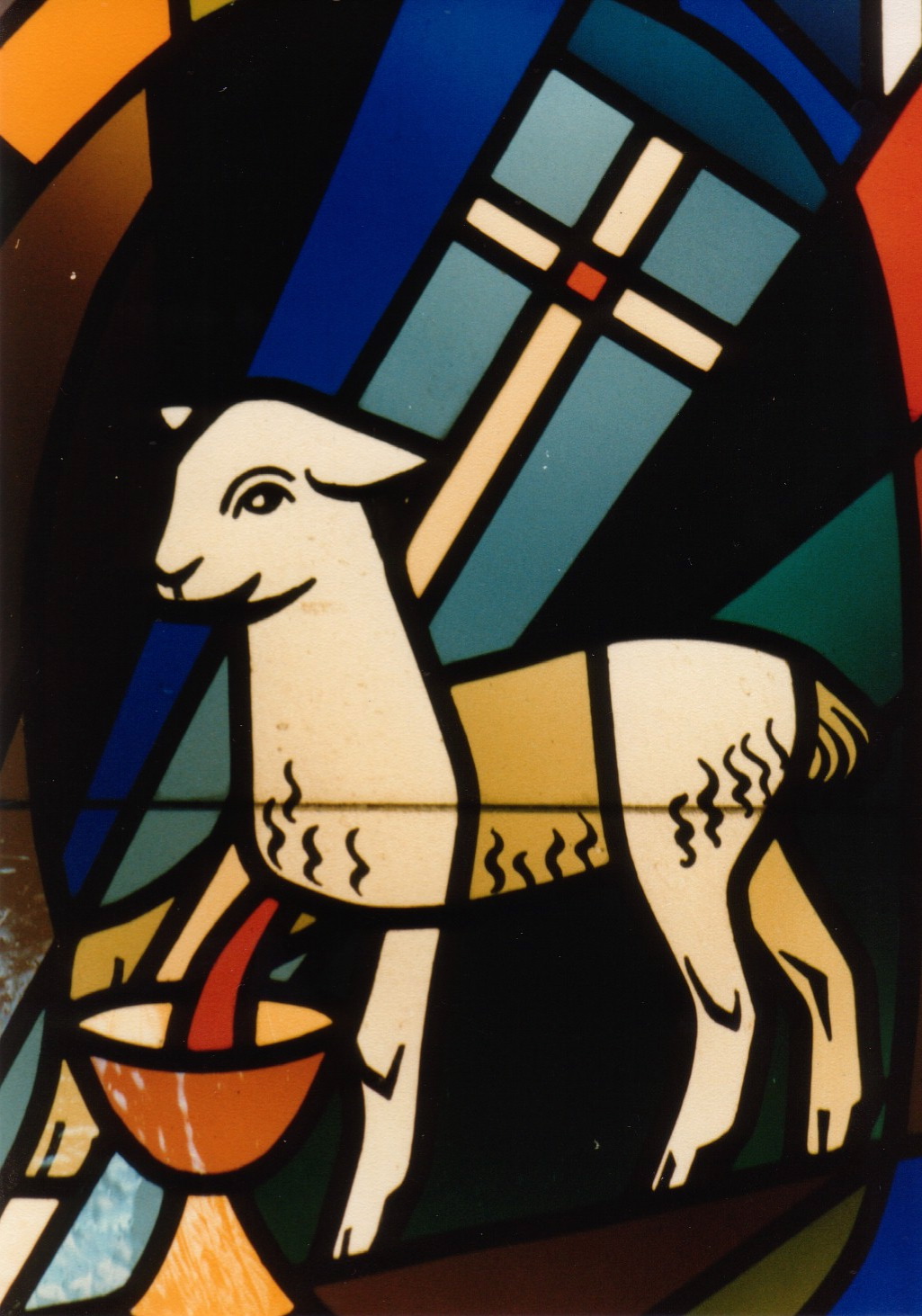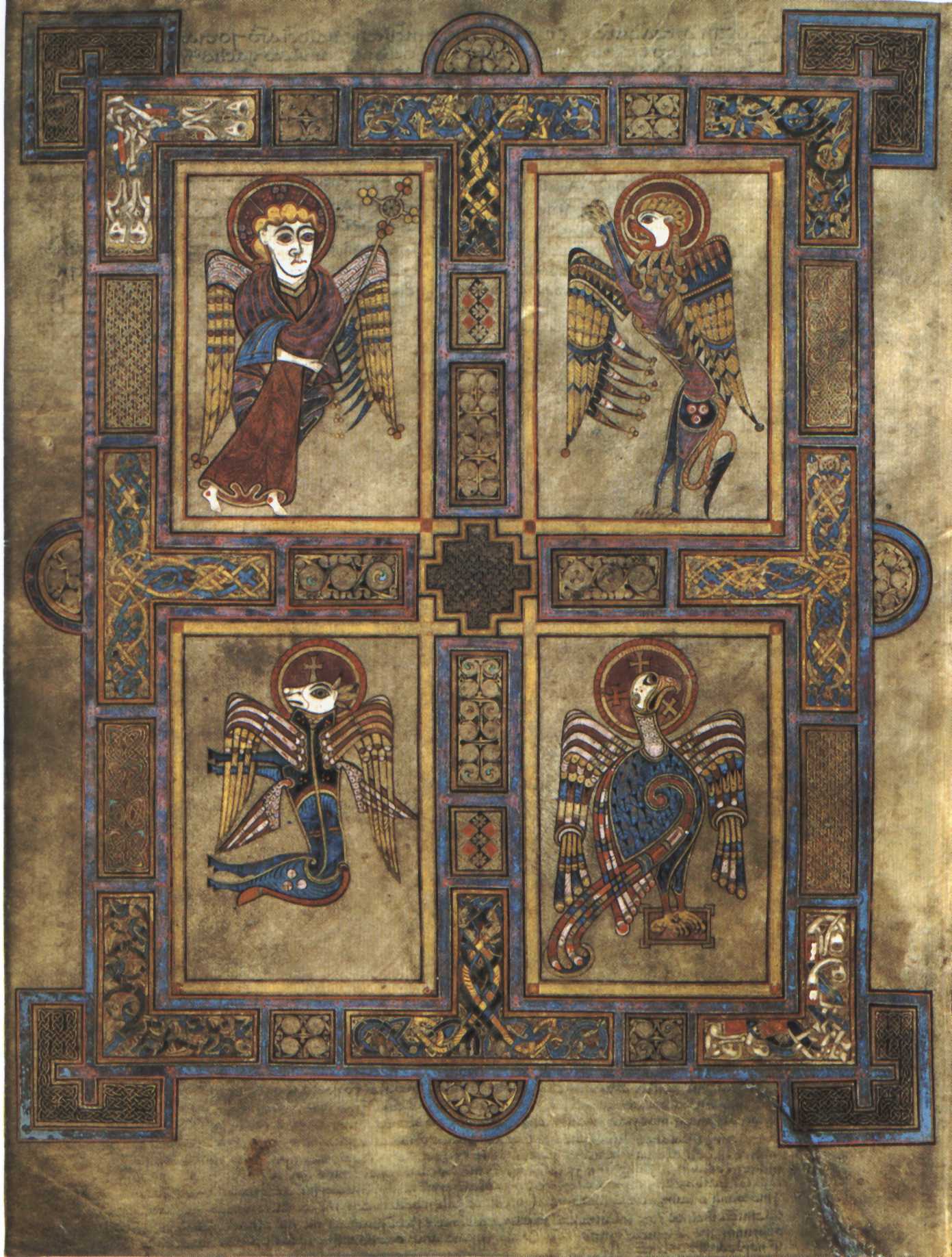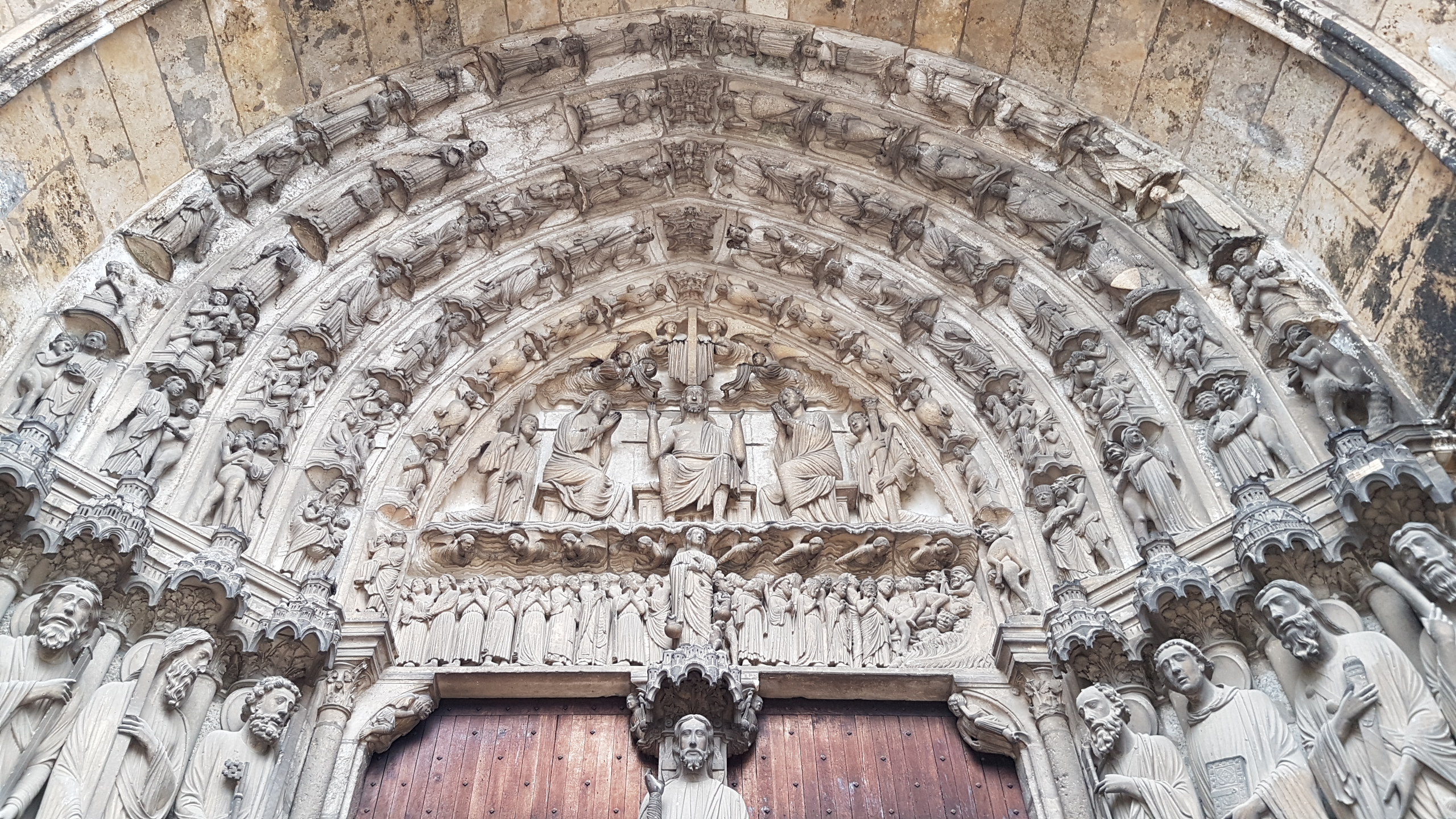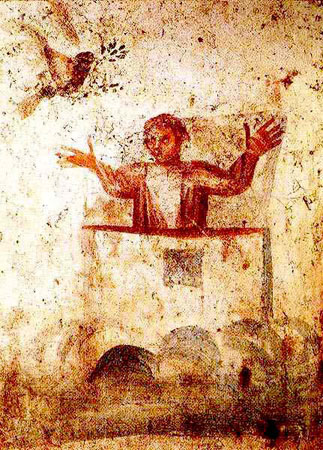|
Pisa Baptistry
The Pisa Baptistery of St. John () is a Roman Catholic ecclesiastical building in Pisa, Italy. Construction started in 1152 to replace an older baptistery, and when it was completed in 1363, it became the second building, in chronological order, in the Piazza dei Miracoli, near the Duomo di Pisa and the cathedral's free-standing campanile, the famous Leaning Tower of Pisa. The baptistery was designed by Diotisalvi, whose signature can be read on two pillars inside the building, with the date 1153. Description The largest baptistery in Italy, it is 54.86 m high, with a diameter of 34.13 m. The Pisa Baptistery is an example of the transition from the Romanesque style to the Gothic style: the lower section is in the Romanesque style, with rounded arches, while the upper sections are in the Gothic style, with pointed wimpergs and a rich figurative program. Like the cathedral and the campanile the Baptistery is built of bichromatic Carrara marble, white with recurring horizontal li ... [...More Info...] [...Related Items...] OR: [Wikipedia] [Google] [Baidu] |
Pisa
Pisa ( ; ) is a city and ''comune'' (municipality) in Tuscany, Central Italy, straddling the Arno just before it empties into the Ligurian Sea. It is the capital city of the Province of Pisa. Although Pisa is known worldwide for the Leaning Tower of Pisa, the city contains more than twenty other historic churches, several medieval palaces, and bridges across the Arno. Much of the city's architecture was financed from its history as one of the Italian maritime republics. The city is also home to the University of Pisa, which has a history going back to the 12th century, the Scuola Normale Superiore di Pisa, founded by Napoleon in 1810, and its offshoot, the Sant'Anna School of Advanced Studies.Scuola Superiore Sant'Anna di Pisa Information statistics History ...
|
Pisa Cathedral
Pisa Cathedral (), officially the Primatial Metropolitan Cathedral of the Assumption of Mary (), is a medieval Catholic cathedral dedicated to the Assumption of the Virgin Mary, in the Piazza dei Miracoli in Pisa, Italy, the oldest of the three structures in the plaza followed by the Pisa Baptistry and the Campanile known as the Leaning Tower of Pisa. The cathedral is a notable example of Romanesque architecture, in particular the style known as Pisan Romanesque. Consecrated in 1118, it is the seat of the Archbishop of Pisa. Construction began in 1064 and was completed in 1092. Additional enlargements and a new façade were built in the 12th century and the roof was replaced after damage from a fire in 1595. History Construction on the cathedral began in 1064 by the architect Buscheto, and expenses were paid using the spoils received fighting against the Muslims in Sicily in 1064. It includes various stylistic elements: classical, Lombard-Emilian, Byzantine, and Islamic, dr ... [...More Info...] [...Related Items...] OR: [Wikipedia] [Google] [Baidu] |
Pistoia
Pistoia (; ) is a city and ''comune'' in the Italian region of Tuscany, the capital of a province of the same name, located about north-west of Florence and is crossed by the Ombrone Pistoiese, a tributary of the River Arno. It is a typical Italian medieval city, and it attracts many tourists, especially in the summer. The city is famous throughout Europe for its plant nurseries. History ''Pistoria'' (in Latin other possible forms are ''Pistorium'' or ''Pistoriae'') was a centre of Gallic, Ligurian and Etruscan settlements before becoming a Roman colony in the 6th century BC, along the important road Via Cassia: in 62 BC the demagogue Catiline and his fellow conspirators were slain nearby. From the 5th century the city was a bishopric, and during the Lombardic kingdom it was a royal city and had several privileges. Pistoia's most splendid age began in 1177 when it proclaimed itself a free commune: in the following years it became an important political centre, ere ... [...More Info...] [...Related Items...] OR: [Wikipedia] [Google] [Baidu] |
Mary, Mother Of Jesus
Mary was a first-century Jewish woman of Nazareth, the wife of Saint Joseph, Joseph and the mother of Jesus. She is an important figure of Christianity, venerated under titles of Mary, mother of Jesus, various titles such as Perpetual virginity of Mary, virgin or Queen of Heaven, queen, many of them mentioned in the Litany of Loreto. The Eastern Orthodox Church, Eastern and Oriental Orthodox, Catholic, Anglican, Methodist, Reformed Christianity, Reformed, Baptist, and Lutheran churches believe that Mary, as mother of Jesus, is the Theotokos, Mother of God. The Church of the East historically regarded her as Christotokos, a term still used in Assyrian Church of the East liturgy. Other Protestant views on Mary vary, with some holding her to have lesser status. She has the Mary in Islam, highest position in Islam among all women and is mentioned numerous times in the Quran, including in a chapter Maryam (surah), named after her.Jestice, Phyllis G. ''Holy people of the world: a cros ... [...More Info...] [...Related Items...] OR: [Wikipedia] [Google] [Baidu] |
Architrave
In classical architecture, an architrave (; , also called an epistyle; ) is the lintel or beam, typically made of wood or stone, that rests on the capitals of columns. The term can also apply to all sides, including the vertical members, of a frame with mouldings around a door or window. The word "architrave" has come to be used to refer more generally to a style of mouldings (or other elements) framing a door, window or other rectangular opening, where the horizontal "head" casing extends across the tops of the vertical side casings where the elements join (forming a butt joint, as opposed to a miter joint). Classical architecture In an entablature in classical architecture, it is the lowest part, below the frieze and cornice. The word is derived from the Greek and Latin words ''arche'' and ''trabs'' combined to mean "main beam". The architrave is different in the different Classical orders. In the Tuscan order, it only consists of a plain face, crowned with a fill ... [...More Info...] [...Related Items...] OR: [Wikipedia] [Google] [Baidu] |
Lamb Of God
Lamb of God (; , ) is a Names and titles of Jesus in the New Testament, title for Jesus that appears in the Gospel of John. It appears at wikisource:Bible (American Standard)/John#1:29, John 1:29, where John the Baptist sees Jesus and exclaims, "Behold the Lamb of God who Salvation in Christianity, takes away the Sin#Christianity, sin of the world." It appears again in wikisource:Bible (American Standard)/John#1:36, John 1:36. Christian doctrine holds that a God the Son, divine Jesus chose to suffer crucifixion of Jesus, crucifixion at Calvary to save the world from its sins. He was given up by God the Father, divine Father, as an "agent and servant of God in Christianity, God" in carrying away the sins of the world. In Christian theology the ''Lamb of God'' is viewed as both foundational and integral to the message of Christianity. A lion-like lamb that rises to deliver victory after being slain appears several times in the Book of Revelation. It is also referred to in Pauline w ... [...More Info...] [...Related Items...] OR: [Wikipedia] [Google] [Baidu] |
Twenty-Four Elders
The Twenty-Four Elders are Book of Revelation#Figures in Revelation, figures from the Book of Revelation who appear in the ''Revelations'' 4, 5, 7, 11 and 19 of the Christianity, Christian Bible; in white robes and golden crowns they on sit with musical instruments on thrones before God during the Apocalypse and praise and worship him. Religious scholars have pointed out the thrones indicate that these are beings of power and authority in Heaven, the crowns indicate that their faith has been tested and the white robes indicate that they are clothed in Righteousness#Christianity, righteousness. They are described in the King James Bible, Book of Revelation 4 as: :4 And round about the throne were four and twenty seats: and upon the seats I saw four and twenty elders sitting, clothed in white raiment; and they had on their heads crowns of gold. :10 The four and twenty elders fall down before him that sat on the throne, and worship him that liveth for ever and ever, and cast their ... [...More Info...] [...Related Items...] OR: [Wikipedia] [Google] [Baidu] |
Archivolt
An archivolt (or voussure) is an ornamental Molding (decorative), moulding or band following the curve on the underside of an arch. It is composed of bands of ornamental mouldings (or other architectural elements) surrounding an arched opening, corresponding to the architrave in the case of a rectangular opening. The word is sometimes used to refer to the under-side or inner curve of the arch itself (more properly, the ''intrados''). Most commonly archivolts are found as a feature of the arches of church Portal (architecture), portals. The mouldings and sculptures on these archivolts are used to convey a Theology, theological story or depict religious figures and ideologies of the church in order to represent the gateway between the Sacredness, holy space of the church and the external world. The presence of archivolts on churches is seen throughout history, although their design, both architecturally and artistically, is heavily influenced by the period they were built in and th ... [...More Info...] [...Related Items...] OR: [Wikipedia] [Google] [Baidu] |
David
David (; , "beloved one") was a king of ancient Israel and Judah and the third king of the United Monarchy, according to the Hebrew Bible and Old Testament. The Tel Dan stele, an Aramaic-inscribed stone erected by a king of Aram-Damascus in the late 9th/early 8th centuries BCE to commemorate a victory over two enemy kings, contains the phrase (), which is translated as " House of David" by most scholars. The Mesha Stele, erected by King Mesha of Moab in the 9th century BCE, may also refer to the "House of David", although this is disputed. According to Jewish works such as the '' Seder Olam Rabbah'', '' Seder Olam Zutta'', and '' Sefer ha-Qabbalah'' (all written over a thousand years later), David ascended the throne as the king of Judah in 885 BCE. Apart from this, all that is known of David comes from biblical literature, the historicity of which has been extensively challenged,Writing and Rewriting the Story of Solomon in Ancient Israel; by Isaac Kalimi; page 3 ... [...More Info...] [...Related Items...] OR: [Wikipedia] [Google] [Baidu] |
Harrowing Of Hell
In Christian theology, the Harrowing of Hell (; Greek language, Greek: – "the descent of Christ into Christian views on Hell, Hell" or Christian views on Hades, Hades) is the period of time between the Crucifixion of Jesus and his Resurrection of Jesus, resurrection. In triumphant descent, Jesus Christ, Christ brought Salvation in Christianity, salvation to the souls held captive there since the beginning of the world. Christ's descent into the world of the dead is referred to in the Apostles' Creed and the Athanasian Creed (), which state that he "descended into the underworld" (), although neither mention that he liberated the dead. His descent to the underworld is alluded to in the New Testament in 1 Peter 4:6, which states that the "good tidings were proclaimed to the dead". The ''Catechism of the Catholic Church'' notes Ephesians 4:9, which states that "[Christ] descended into the lower parts of the earth", as also supporting this interpretation. These passages in the ... [...More Info...] [...Related Items...] OR: [Wikipedia] [Google] [Baidu] |
Orans
Orans, a loanword from Medieval Latin ''orans'' () translated as "one who is praying or pleading", also orant or orante, as well as lifting up holy hands, is a posture or attitude (art), bodily attitude of prayer, usually standing, with the elbows close to the sides of the body and with the hands outstretched sideways, palms up. The orans posture of prayer has a Scriptural basis in 1 Timothy 2 (): "I desire, then, that in every place the men should pray, lifting up holy hands without anger or argument" (NRSV). It was common in early Christianity and can frequently be seen in early Christian art, being advised by several early Church Fathers, who saw it as "the outline of the cross". In modern times, the orans position is still preserved in Oriental Orthodoxy, as when Coptic Christian believers pray the seven canonical hours of the Agpeya at fixed prayer times. The orans also occurs within parts of the Catholic, Oriental Orthodox, Eastern Orthodox Church, Eastern Orthodox, Luther ... [...More Info...] [...Related Items...] OR: [Wikipedia] [Google] [Baidu] |
Ascension Of Jesus
The Ascension of Jesus (anglicized from the Vulgate ) is the Christianity, Christian and Islamic belief that Jesus entering heaven alive, ascended to Heaven. Christian doctrine, as reflected in the major Christian creeds and confessional statements, holds that Jesus ascended after his Resurrection of Jesus, resurrection, where he was exaltation of Jesus, exalted as Lord and Christ (title), Christ, session of Christ, sitting at the right hand of God. Schools of Islamic theology, Islamic doctrine holds that Jesus directly ascended to heaven without dying or resurrecting. The Gospels and other New Testament writings imply resurrection and exaltation as a single event. The ascension is "more assumed than described," and only Luke–Acts, Luke and Acts contain direct accounts of it, but with different chronologies. In Christian art, the ascending Jesus is often shown blessing an earthly group below him, signifying the entire Church. The Feast of the Ascension is celebrated on the 40t ... [...More Info...] [...Related Items...] OR: [Wikipedia] [Google] [Baidu] |











